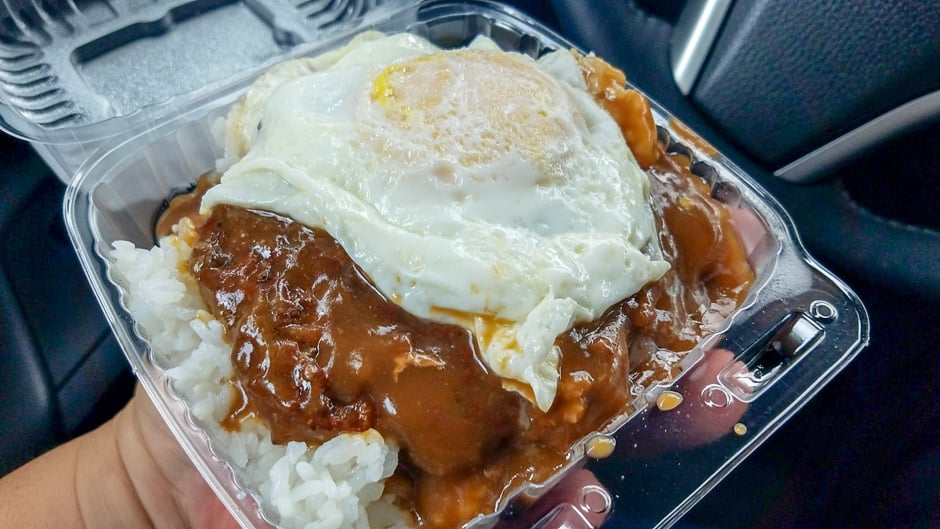
Loco Moco: Hawaii’s Iconic Fusion Comfort Food
Share
In the vibrant and multicultural world of Hawaiian cuisine, few dishes capture the spirit of fusion and comfort quite like loco moco. With its base of steamed white rice, topped with a hamburger patty, rich brown gravy, and a fried egg, loco moco is a hearty, satisfying meal that tells a deeper story about Hawaiian culture, American influence, and Asian culinary traditions.
From humble beginnings in a small Hilo diner to its current status as a menu staple across Hawaii—and even on the mainland—loco moco’s evolution reveals the creativity and adaptability of island food culture.
A Dish Born in Hilo, Hawaii
The most widely accepted origin story of loco moco begins in 1949 in the town of Hilo on the Big Island of Hawaii. According to local lore, a group of teenagers from the Lincoln Wreckers Sports Club walked into the Lincoln Grill, a small restaurant operated by Richard and Nancy Inouye, and asked for a new kind of meal: something affordable, quick, and filling that didn’t involve traditional sandwiches or plate lunches.
Nancy Inouye and her husband Richard responded by placing a grilled hamburger patty on top of a scoop of rice, then topping it with brown gravy. A fried egg was added shortly thereafter to complete the dish. The young patrons loved it—and just like that, loco moco was born.
The name “loco moco” is said to have come from one of the teens nicknamed “Loco” (Spanish for crazy), and “moco” was added just for the rhyme. Though linguistically nonsensical in Spanish (“crazy snot,” if taken literally), the name stuck and became legendary in Hawaiian food lore.
The Roots of Each Ingredient
White Rice: A Staple from Asian Immigrant Influence
Rice became a foundational ingredient in Hawaiian cuisine due to the influx of Asian immigrants in the late 19th and early 20th centuries, particularly from Japan, China, Korea, and the Philippines. Plantation workers brought with them culinary traditions that emphasized rice as a daily staple.
As a cheap and filling carbohydrate, rice was perfect for large families and communal meals. Its presence in loco moco reflects this deep-rooted Asian influence on the islands’ food culture.
Hamburger Patty: A Symbol of American Presence
The hamburger patty represents the American aspect of Hawaii’s diverse culinary melting pot. With Hawaii becoming a U.S. territory in 1898 and a state in 1959, American food culture—including fast food and meat-heavy dishes—began to influence local dining habits.
Hamburgers, introduced by American soldiers and fast-food chains, quickly became popular across the islands. The idea to use a burger patty instead of traditional meats like pork or fish was both practical and innovative. It delivered flavor, protein, and mass appeal—especially to younger diners looking for a Western-style comfort food with a local twist.
Brown Gravy: A Fusion of Western and Island Flavors
Gravy, while more closely associated with American or European cuisine, was also a familiar addition to Hawaiian-style "plate lunch" dishes, which often featured meats served with gravy over rice. Plate lunches themselves were a product of Hawaii’s plantation history, where workers from different ethnic backgrounds combined food elements into convenient, hearty meals.
Adding gravy to the hamburger and rice added a luscious, savory element that tied the dish together, transforming it from simple leftovers into something indulgent and crave-worthy.
The Fried Egg: The Final Touch
The addition of a fried egg, typically with a runny yolk, elevated the loco moco into full-blown comfort food. Though it wasn’t part of the earliest iterations, the egg quickly became standard. Eggs have long been a feature of Asian and Hawaiian breakfasts, and their richness balances perfectly with the umami of the gravy and the heartiness of the beef.
Loco Moco as a Cultural Symbol
What makes loco moco unique is not just its flavor but what it represents: a fusion of Japanese food traditions, American culinary staples, and local Hawaiian ingenuity. It embodies the spirit of the islands, where different cultures blend and adapt to create something original and meaningful.
Loco moco is also deeply embedded in Hawaiian comfort food culture. It’s a go-to meal after surfing, a hangover cure, or simply a filling lunch for workers and students. It's often served in local diners, drive-ins, and Hawaiian plate lunch spots, alongside other staples like teriyaki chicken, kalua pork, and macaroni salad.
Variations on a Classic
Like many iconic dishes, loco moco has evolved over time. While the classic version remains widely loved, variations abound:
-
Deluxe Loco Moco: Includes extra hamburger patties or gravy infused with mushrooms or onions.
-
Seafood Loco Moco: Substitutes the beef patty with seared ahi, shrimp, or salmon.
-
Spam or Portuguese Sausage Loco Moco: Adds a uniquely local twist with other favorite Hawaiian proteins.
-
Vegan and Vegetarian Versions: Use plant-based patties and mushroom or miso-based gravies.
Restaurants, both in Hawaii and abroad, continue to riff on loco moco, celebrating its versatility while honoring its roots.
Loco Moco Beyond the Islands
Thanks to Hawaii’s strong cultural influence and growing global interest in fusion cuisines, loco moco has traveled far beyond the islands. It appears on menus across the continental U.S., particularly in cities with large Hawaiian or Pacific Islander communities like Los Angeles, Las Vegas, and Portland.
Travelers often try the dish during visits to Hawaii and seek it out when they return home, helping to grow its popularity. Social media and food bloggers have also played a significant role in showcasing loco moco as a must-try part of Hawaiian food culture.
A Dish That Tells Hawaii’s Story
Loco moco is more than just a filling meal—it’s a cultural artifact. Each layer of the dish carries a piece of Hawaii’s history: from the immigrant rice fields to the American diner scene to the island-style adaptations that make it distinctly local.
Its continued popularity speaks to its ability to comfort, satisfy, and connect people to the flavors of the islands. Whether served in a small-town diner in Hilo or reimagined in a high-end Honolulu bistro, loco moco remains one of Hawaii’s most beloved culinary creations.
In a single bowl, loco moco encapsulates the heart of Hawaii—diverse, adaptable, rich with history, and always ono (delicious).
Keywords:
Hawaiian culture, Hawaii food, loco moco, comfort food Hawaii, Japanese food Hawaii, American influence Hawaii, loco moco origin, Hawaii cuisine, fusion food, loco moco history
